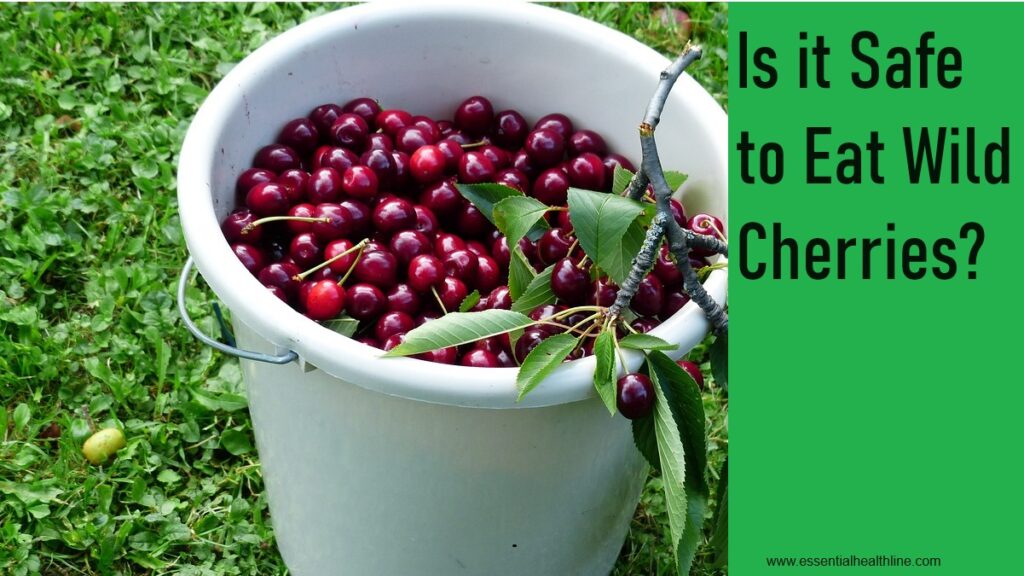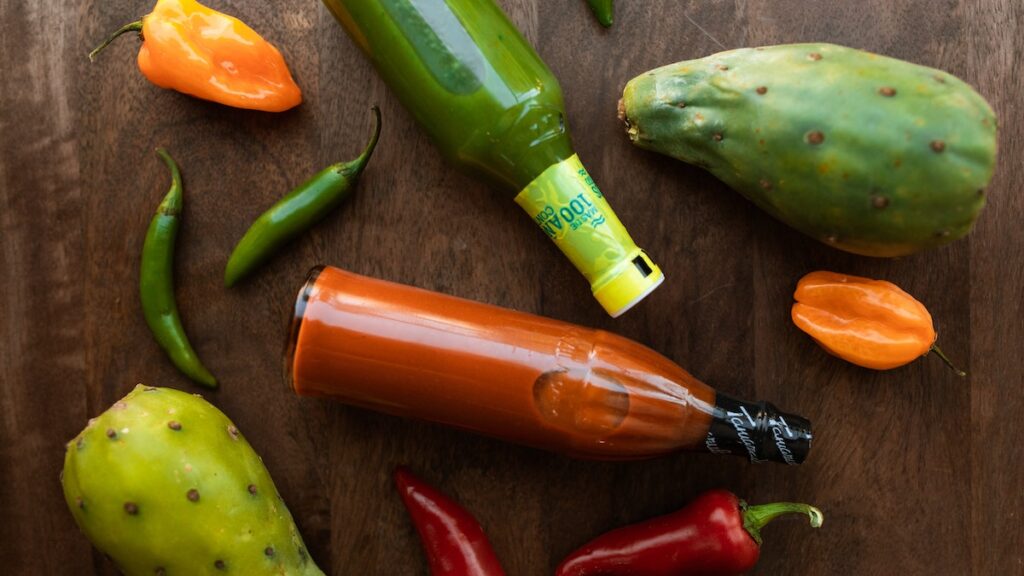Imagine biting into a juicy, tangy wild cherry, its burst of flavor sending your taste buds into a frenzy. These little fruits promise delight for foragers and food lovers. But amidst their appeal, a pressing question arises: Are wild cherries safe to eat?
Wild cherries are safe to eat if they’re ripe and clean. Their bright color and juicy flesh make them irresistible. However, not all cherries are created equal. Some types have seeds and leaves that can upset your tummy.
So, how do you know which ones are good to eat? This article guides you through the world of wild cherries, helping you spot the ones that’ll treat your taste buds right and avoid the ones that won’t.
Are Wild Cherries Safe to Eat?
Wild cherries, also known as Prunus avium, are generally safe to eat, but it’s essential to exercise caution when consuming them. While they can enhance the flavor of various dishes and are enjoyable to eat alone, not all wild cherries are edible.
To be safe eating wild cherries, you must know how to pick the right ones. Look for colorful cherries that aren’t squishy and are juicy. Don’t eat cherries that look damaged or old because they might be unsafe.
Also, eat only a few cherries at a time, and never eat the pits or leaves because they may be harmful. You can enjoy their yummy taste without problems by carefully choosing the right cherries.
Features of Wild Cherries You Can Eat
Discovering wild cherries is exciting for nature lovers. They grow in woods, forests, and open areas. If identified and picked right, they’re tasty and healthy.
Here are their features:
- Red to black color
- Small size (about 1/4 to 1 inch wide)
- Sweet and tart taste
- Soft and juicy inside
- Long, pointy leaves with rough edges
- Dark bark
Let’s delve into each of these features below.
Red to Black Color
Wild cherries that are safe to eat often come in shades of red or black. They are like small, colorful gems hanging from the trees, gleaming brightly when ripe and ready.
The red ones resemble the color of a stop sign, while the black ones look like the deep night sky. These colors signal that they’re good to be picked and enjoyed.
Small Size (About 1/4 to 1 Inch Wide)
Wild cherries that you can eat are usually small, about the width of a quarter or a bit bigger, up to an inch wide.
They’re like tiny versions of the cherries you might see in the store. Even though they’re small, they pack a lot of flavor! So, don’t let their size fool you – they may be tiny but delicious.
Sweet and Tart Taste
The taste of wild cherries you can eat is both sweet and tart. When you take a bite, you might notice they’re sugary like candy but have a tangy kick. It’s like having a mix of sweetness and sourness all in one delicious fruit.
This combination of flavors makes them tasty and exciting to eat.
Soft and Juicy Inside
Inside, the wild cherries that you can eat are soft and juicy. You’ll find they’re tender and moist when you bite into them, bursting with delicious flavor.
It’s like biting into a little burst of fruity goodness! The juicy inside makes them refreshing to eat, especially on a hot day. So, get ready for a juicy delight when you bite these wild cherries.
Long, Pointy Leaves With Rough Edges
Wild cherry tree leaves are long, pointy, and rough to the touch, resembling slender green fingers extending from the branches.
Their sharp points and jagged edges give them a unique appearance, feeling rough like tiny saw teeth when touched. Watch for these long, pointy leaves with rough edges to identify a wild cherry tree.
Dark Bark
The bark of wild cherry trees is dark in color, ranging from brown to gray. It acts as a protective layer for the tree, covering its trunk and branches. This dark bark helps the tree stay healthy and strong.
So, if you see a tree with dark bark in the forest, it might be a wild cherry tree.
What Are the Benefits of Consuming Wild Cherries?
Wild Cherries have various potential health benefits, including the following:
- Rich in antioxidants
- Support heart health
- Promote better sleep
- Relieve muscle soreness
- Reduce inflammation
- Boost immune system
Continue reading as we delve into each benefit below.
Rich in Antioxidants
Wild cherries have natural compounds that protect your body from harm by fighting off harmful molecules called free radicals.
These compounds, like anthocyanins, help keep your cells healthy and reduce the risk of cancer and heart disease.
Supports Heart Health
Wild cherries contain particular substances that are good for your heart. These substances help lower harmful cholesterol levels in your blood and make your blood vessels work better.
Promotes Better Sleep
Did you know wild cherries can help you sleep better? They contain a natural hormone called melatonin, which tells your body when to sleep.
Consuming wild cherries or cherry juice before going to bed can assist in speeding up the process of falling asleep and experiencing a more peaceful night’s rest.
Relieve Muscle Soreness
Wild cherries can help ease those muscles if you’ve worked hard. They have properties that reduce inflammation, which causes that achy feeling after exercise.
Including wild cherries in your post-workout snack can help you recover your muscles faster and feel less sore.
Reduce Inflammation
Wild cherries contain compounds like anthocyanins and flavonoids, which possess anti-inflammatory properties.
These compounds reduce inflammation by stopping harmful free radicals and blocking the production of inflammatory molecules.
Boost Immune System
Wild cherries help your body fight illnesses by giving it essential nutrients and antioxidants. They contain vitamins and compounds that reduce inflammation and support your immune system, keeping you healthy.
Do Wild Cherries Taste Good?
Wild cherries come in various flavors, ranging from sweet to tart. Varieties like black cherries (Prunus serotina) and chokecherries are perfect for making desserts such as pies and jams, blending richness with tanginess.
However, taste preferences differ. While some people enjoy their tangy taste, others may find them too sour. Therefore, tasting them yourself is vital to know what you prefer.
Additionally, when picking wild cherries, it’s best to choose wisely and seek advice from reliable sources. Though there are risks, the unique flavor of wild cherries can be a delightful treat.
What Are the Potential Risks of Consuming Wild Cherries?
Although wild cherries can be tasty, consuming them carries some potential risks that you should be aware of. Here are a few of the risks:
- Picking the wrong type of wild cherry can make you sick.
- If you don’t wash or handle them properly, you could get sick from bacteria or parasites.
- Some people might have allergies to wild cherries, which can cause itching, swelling, or trouble breathing.
- Eating too many wild cherries without brushing your teeth can lead to cavities.
To stay safe, know the type of wild cherry you’re eating, handle and wash them well, don’t overeat, and seek medical help if you feel sick.
FAQs
Can Cooking or Processing Make Wild Cherries Safe to Eat?
Cooking or processing wild cherries can make them safer to eat, but it doesn’t guarantee complete safety. Cooking wild cherries kills harmful bacteria or parasites, reducing the risk of getting sick.
Even after cooking or processing, some people may still have allergic reactions to specific compounds in wild cherries. So, while cooking or processing can improve safety, it’s essential to be careful and ensure you’re eating safe wild cherries.
Methods like canning or freezing can also help preserve the cherries. However, it’s important to identify safe wild cherries to ensure they’re safe to eat.
Are There Any Poisonous Look-Alikes to Wild Cherries?
Yes, there are some poisonous look-alikes to wild cherries. One example is the chokecherry. It resembles wild cherries but contains cyanide compounds that can make you sick if consumed.
Nonetheless, you can identify chokecherries by their longer leaves with finer edges than wild cherry leaves. Another plant to watch out for is the laurel cherry, also known as the Carolina cherry laurel. While its berries may look tempting, they’re toxic.
Therefore, inspecting and ensuring you’re picking real wild cherries is essential. If you’re uncertain, it’s best to seek guidance from someone knowledgeable or do some research to stay safe while foraging. You can enjoy nature’s bounty without risking your health by being cautious and informed.
What’s the Verdict?
Are wild cherries safe to eat? When you correctly identify and gather them, many wild cherries are safe to eat and even provide more nutrients than the ones you buy. Just ensure you’ve got the right kind of cherry before eating it. Eating the wrong type can make you sick.
Mixing up your wild cherry picking with other fresh, healthy foods is a good idea to keep your diet balanced. If you’re careful and know what to look for, picking wild cherries can be fun and yummy while exploring outside.



